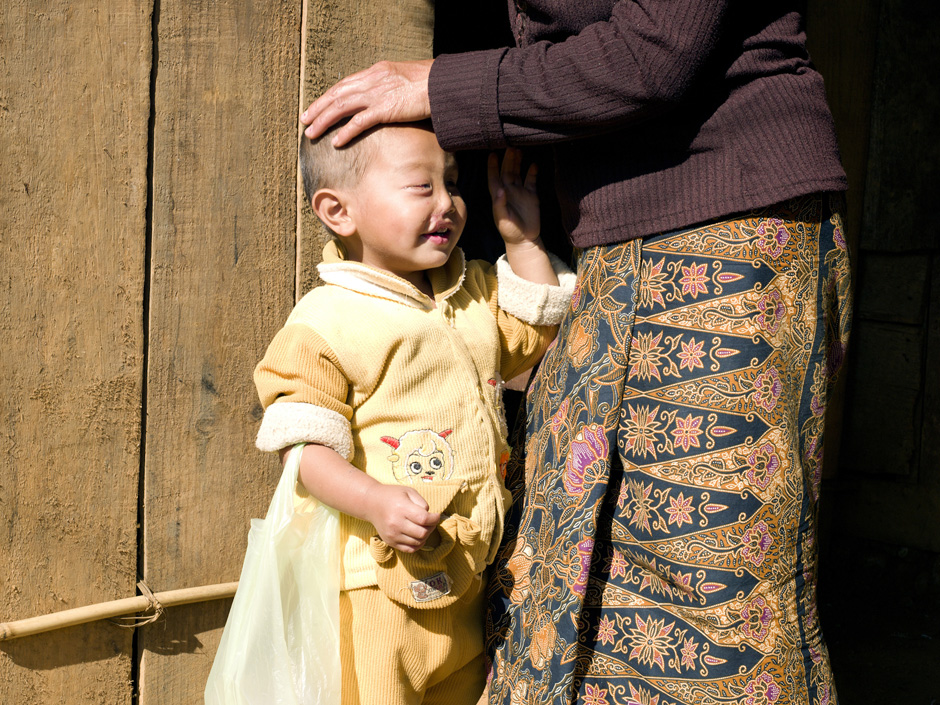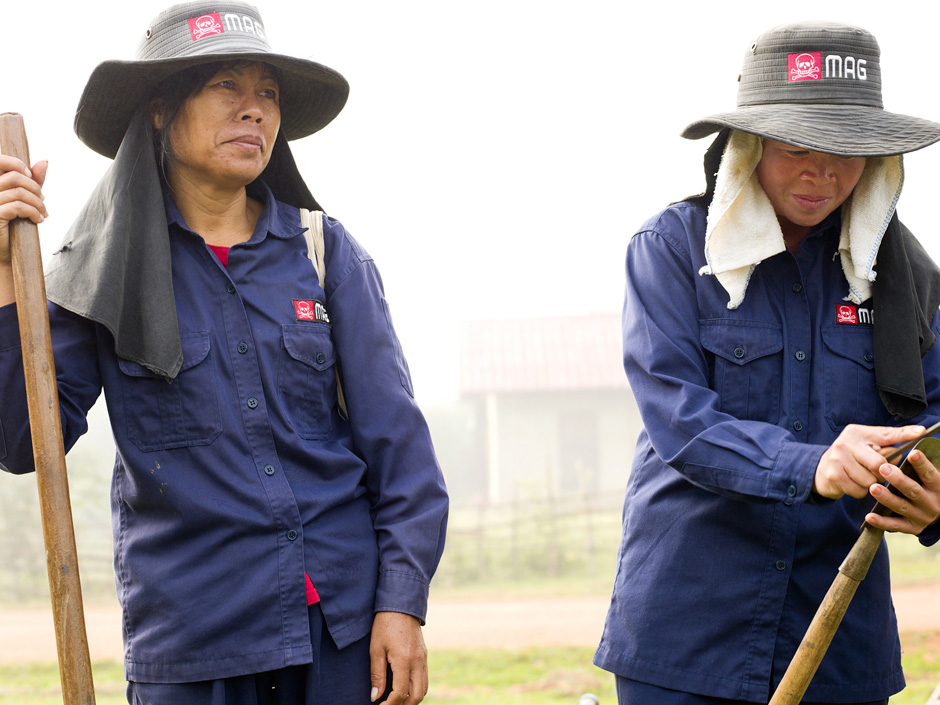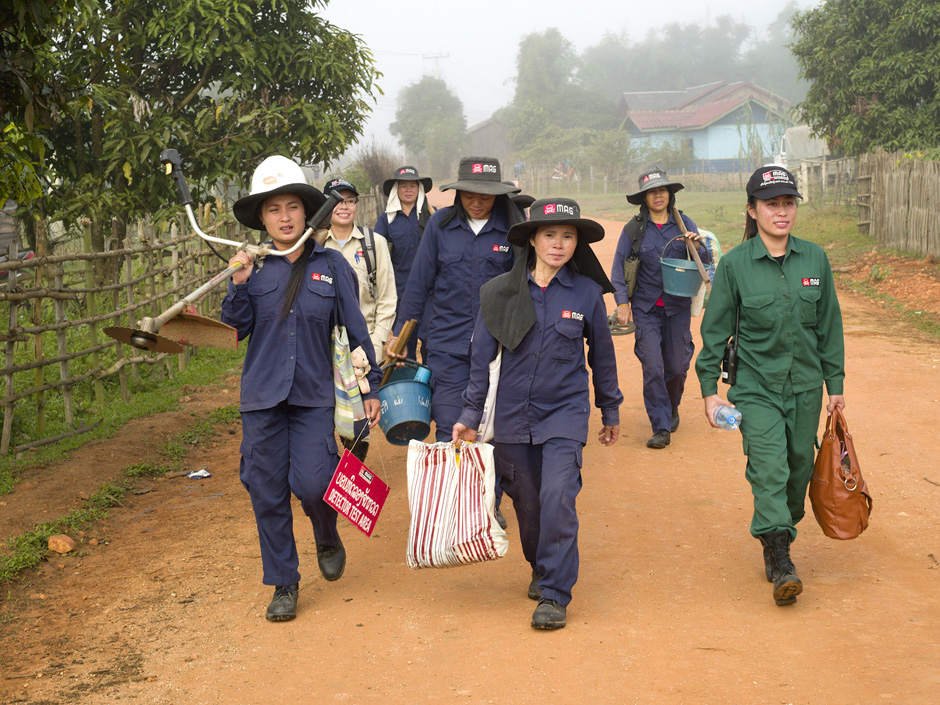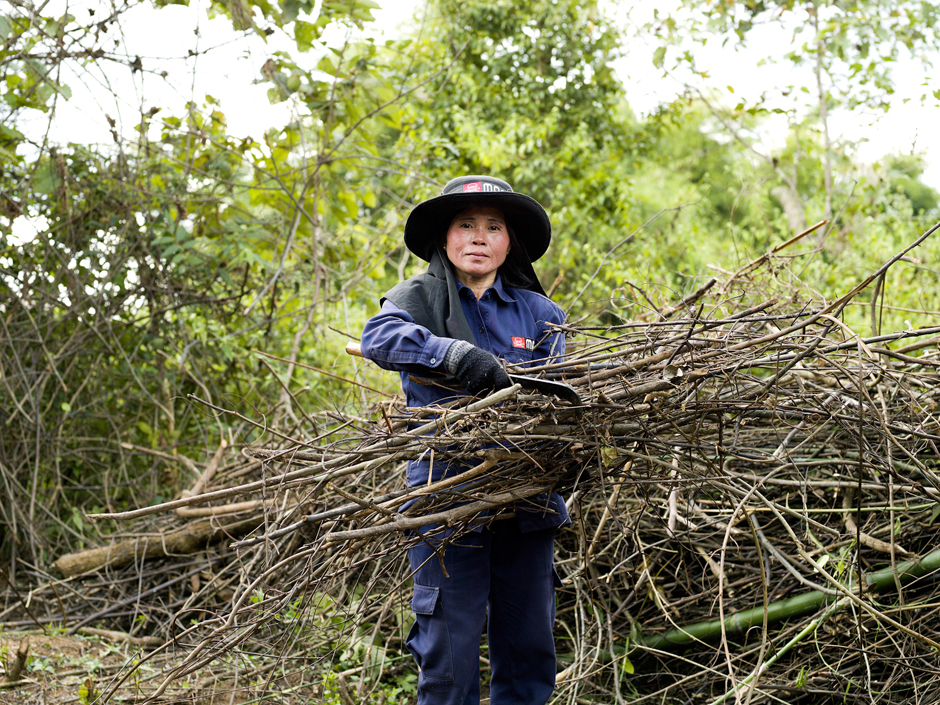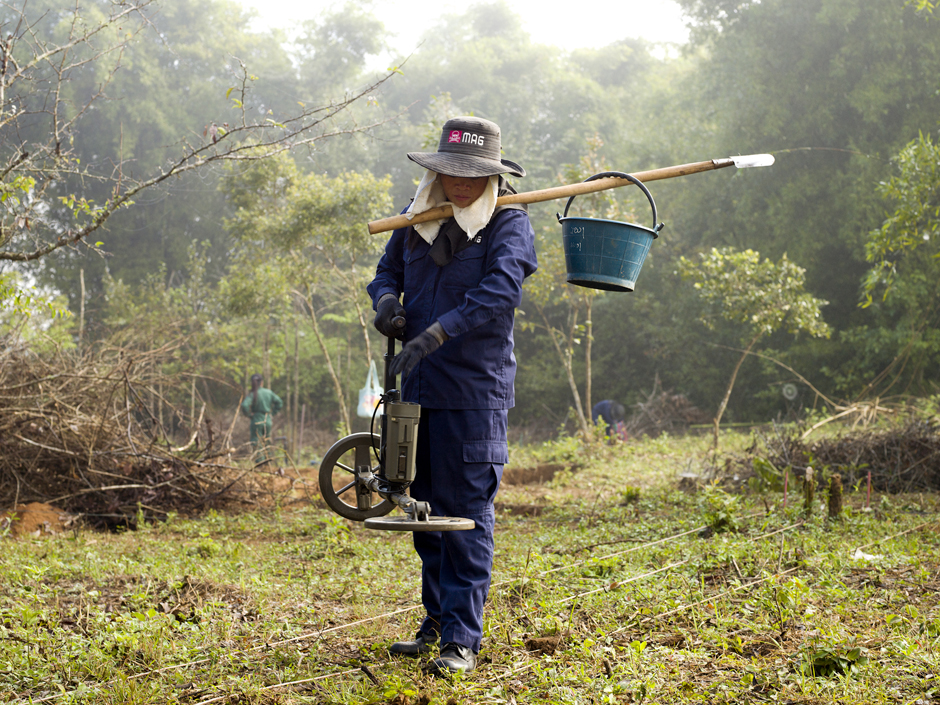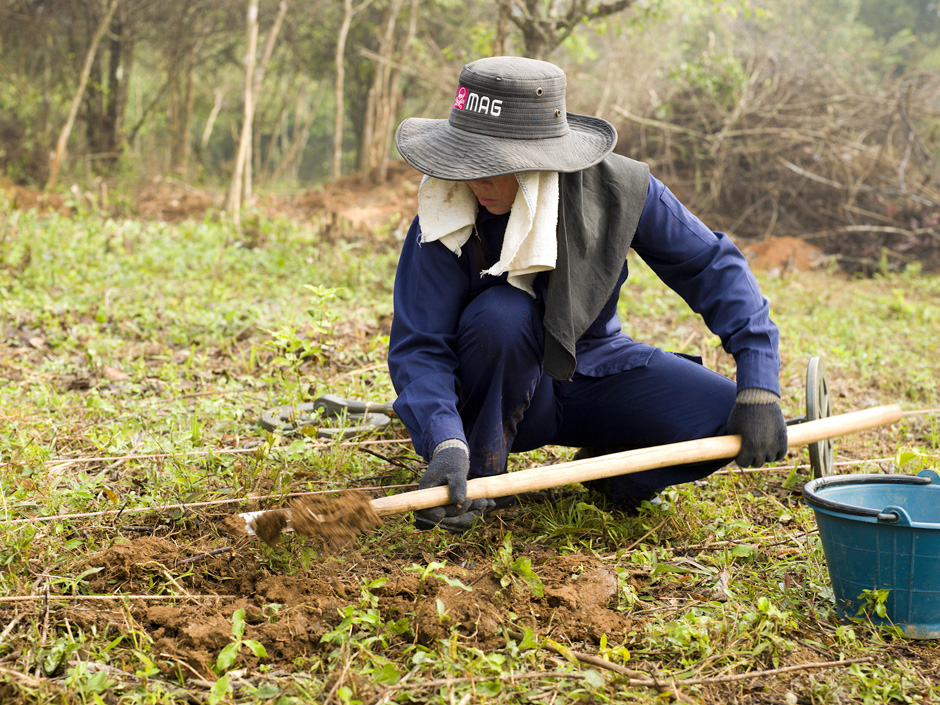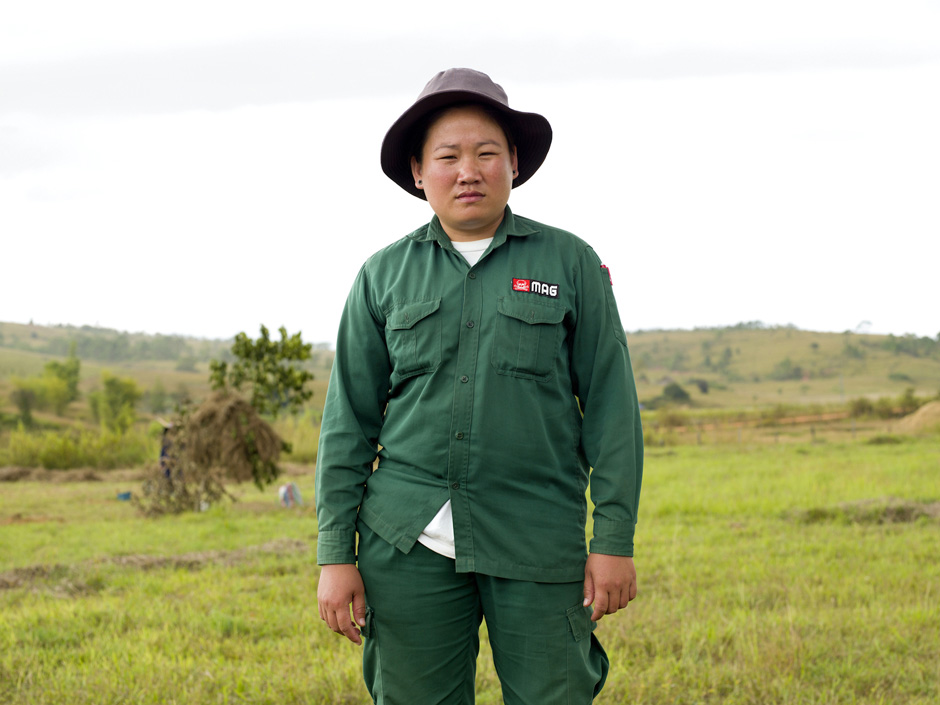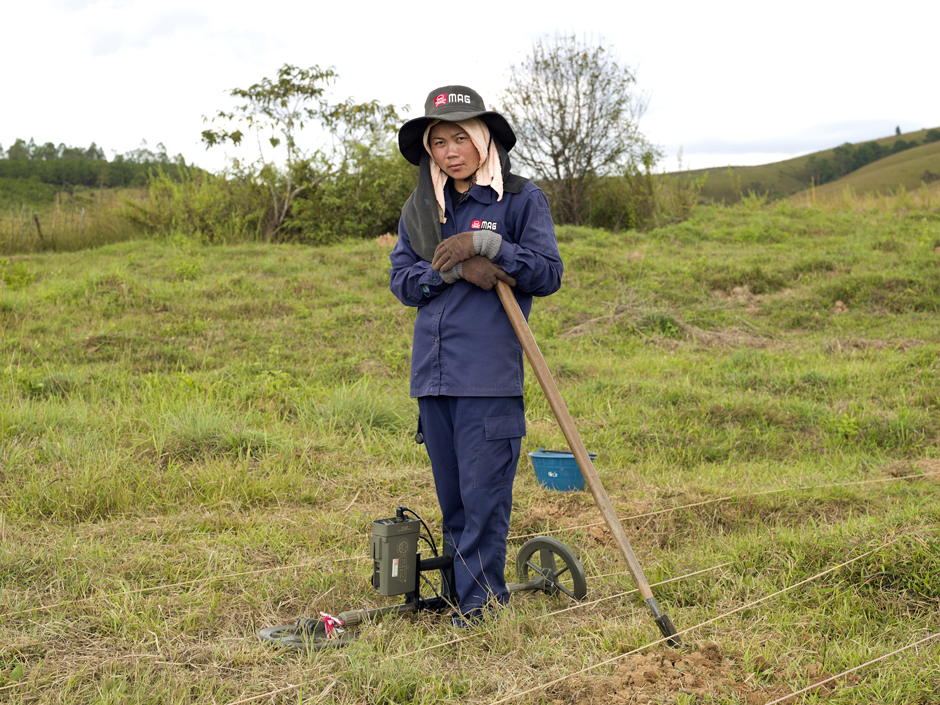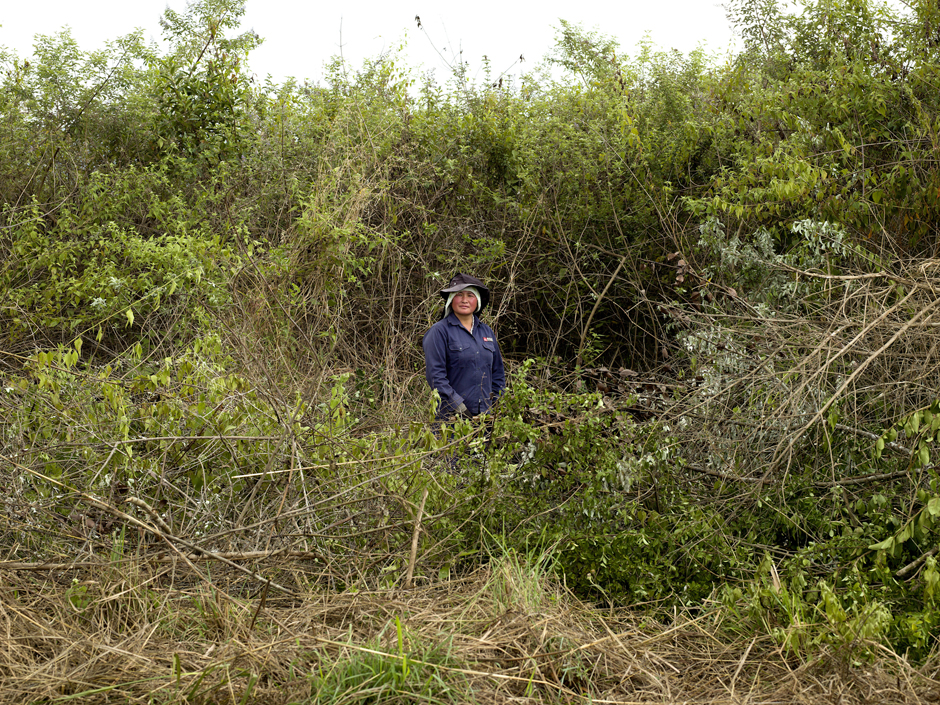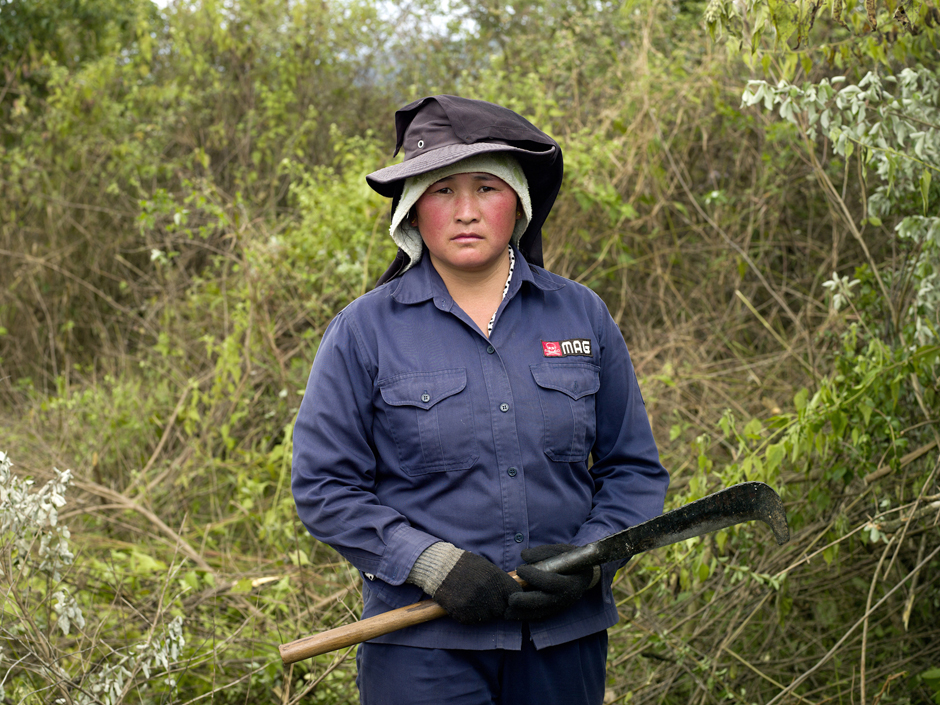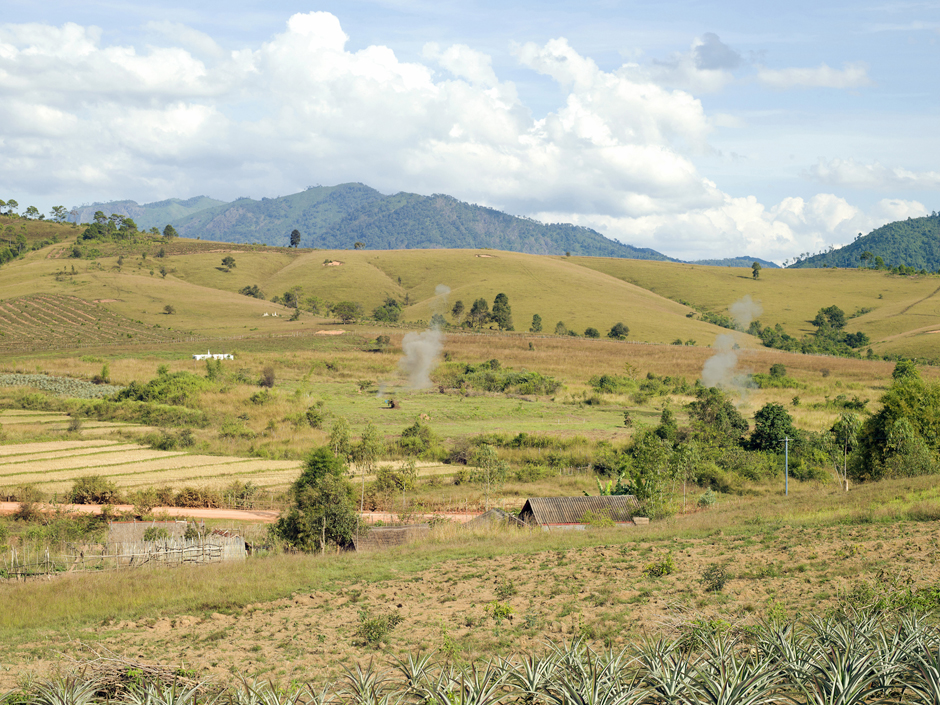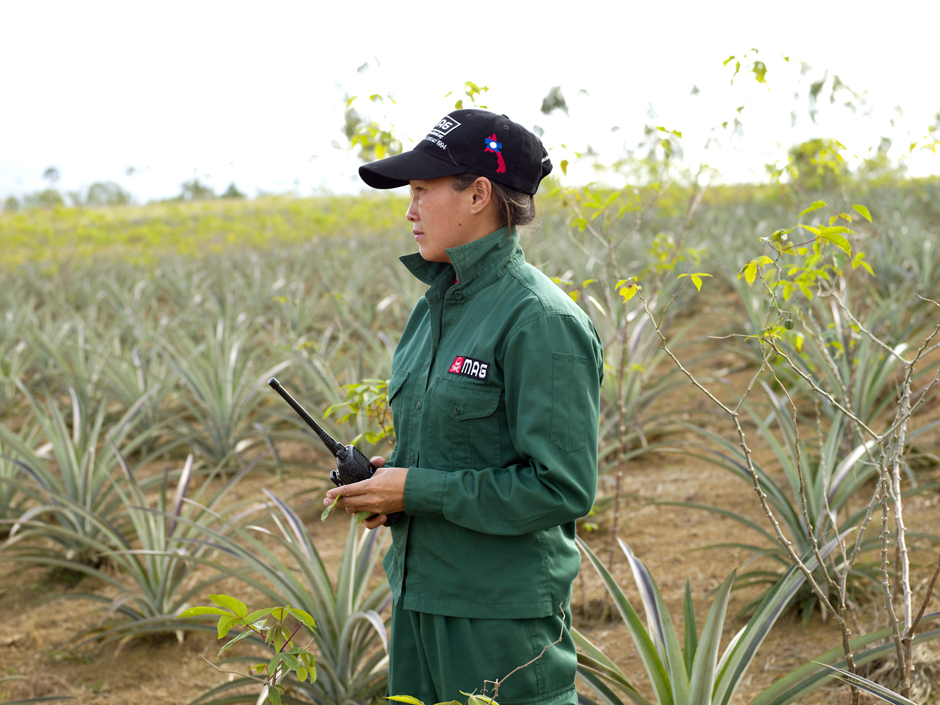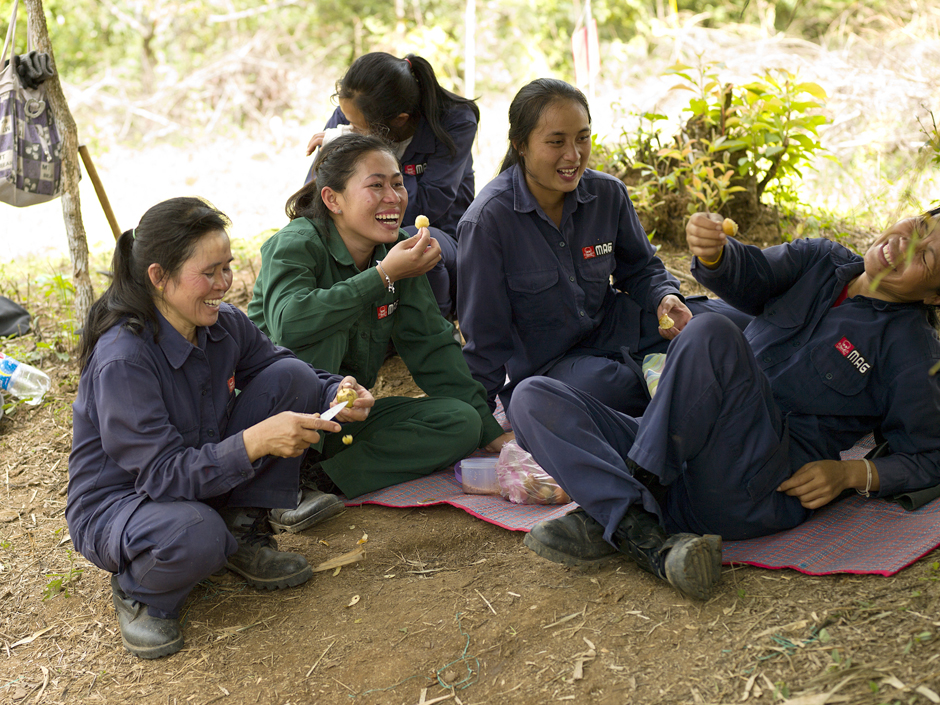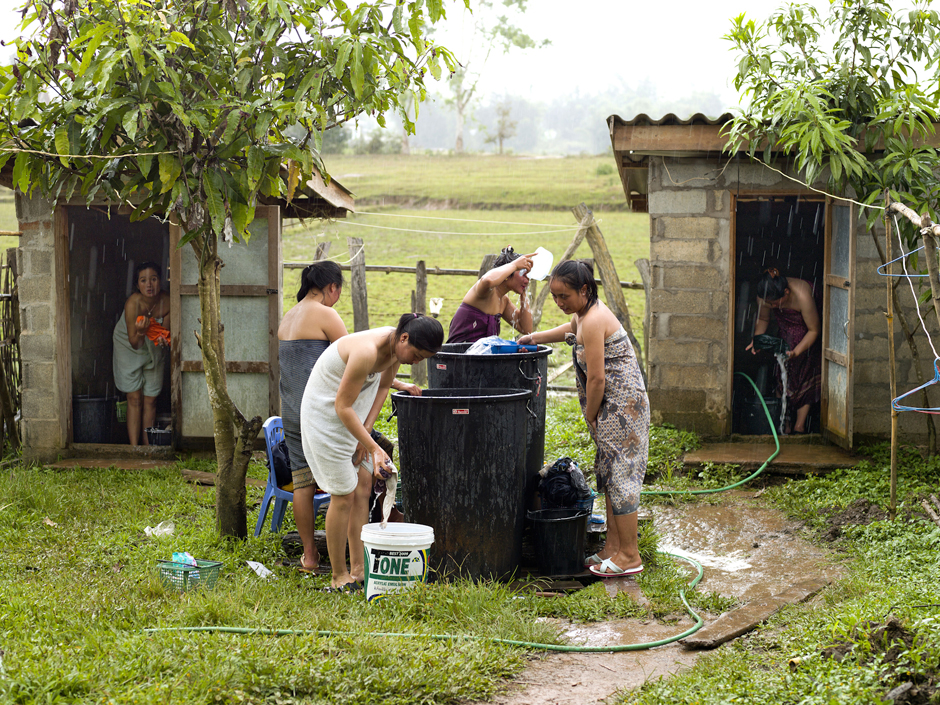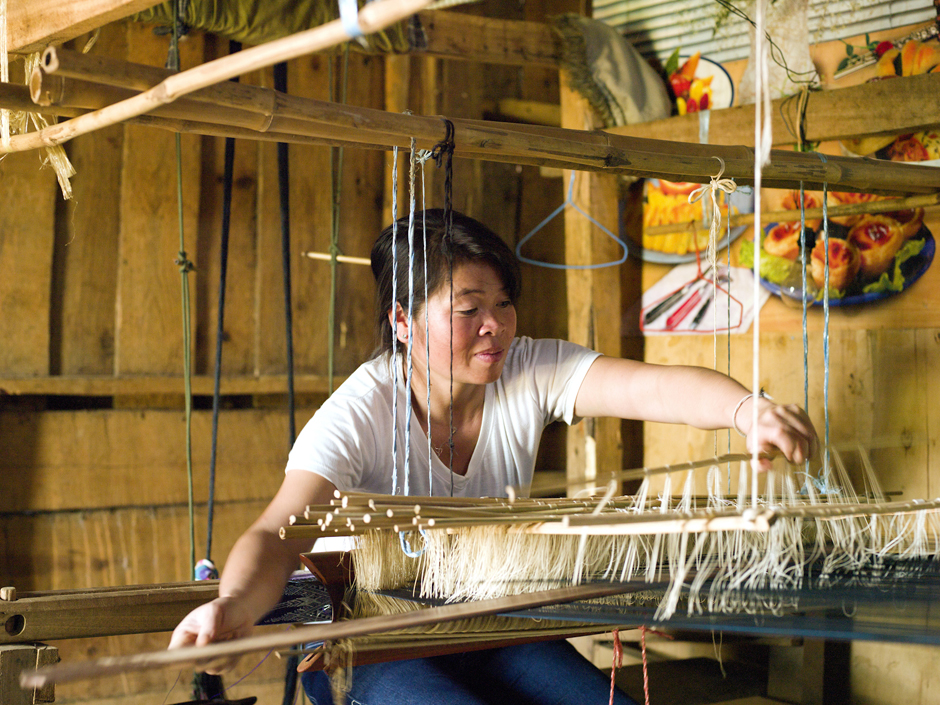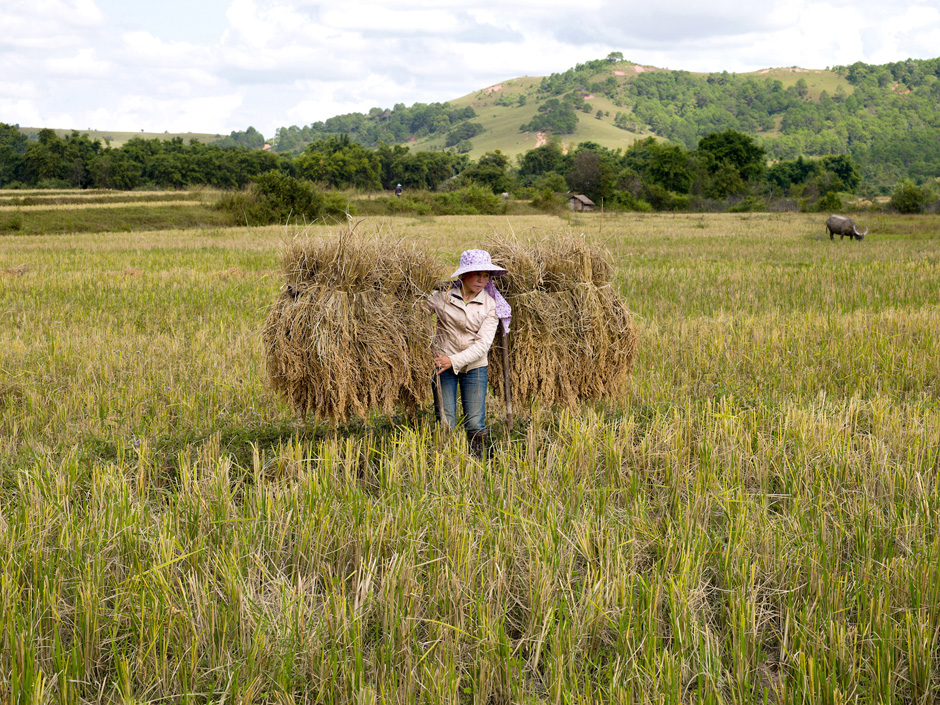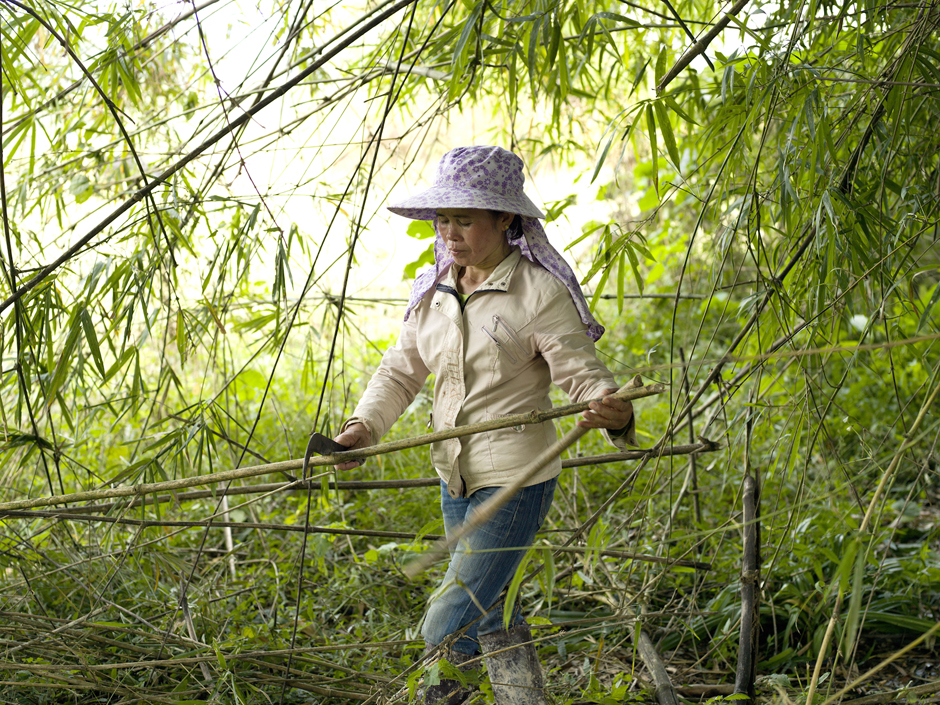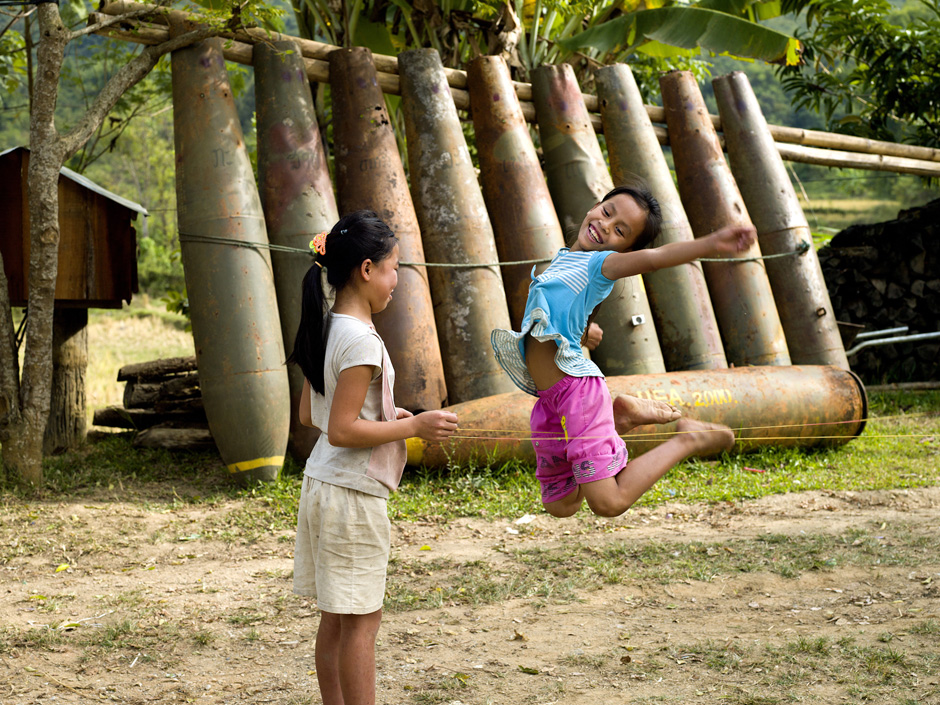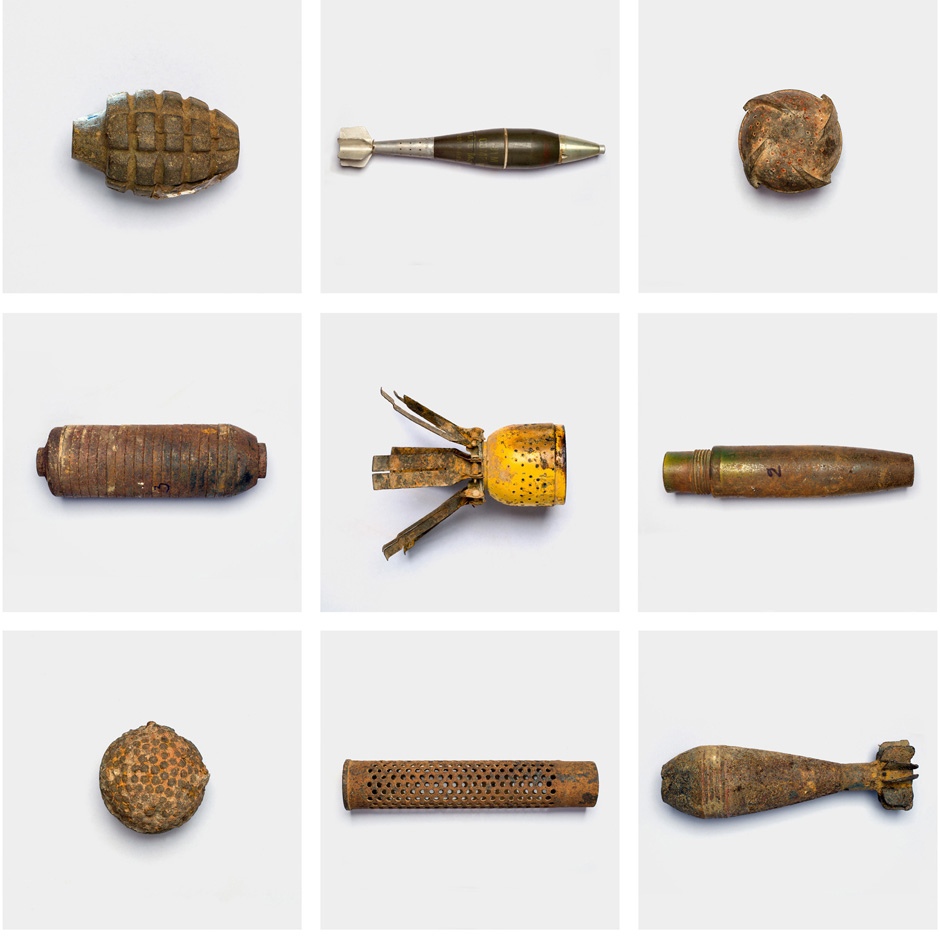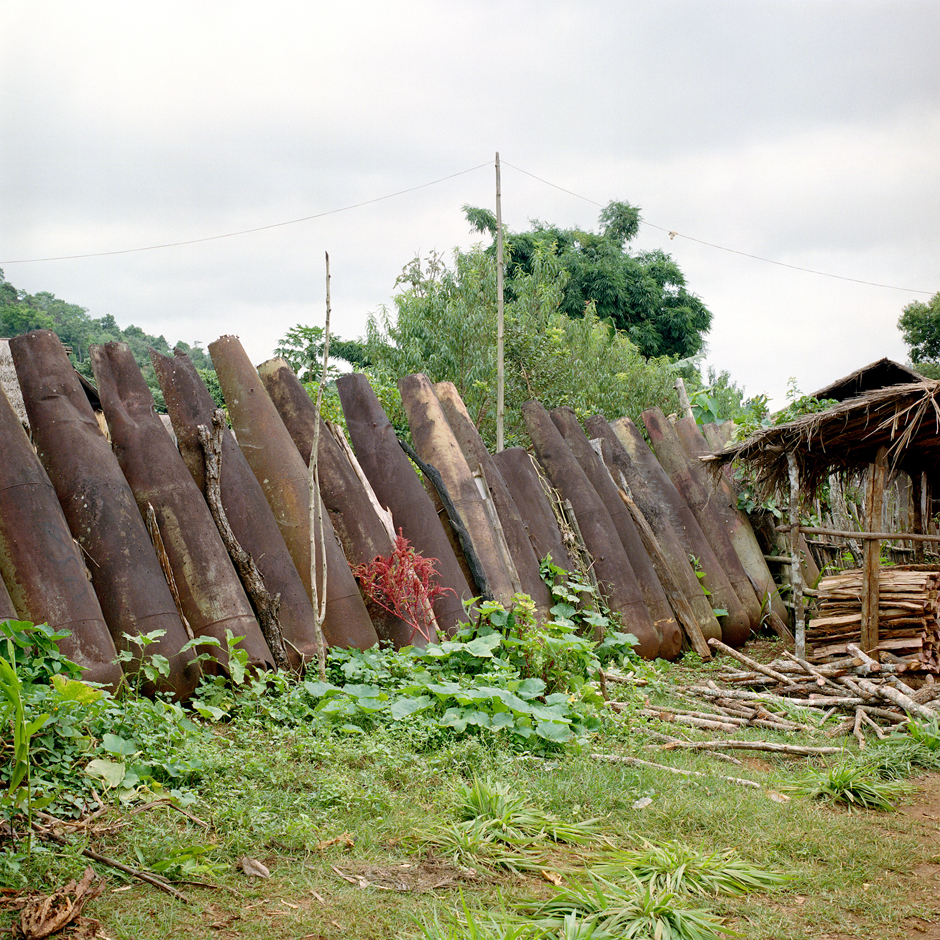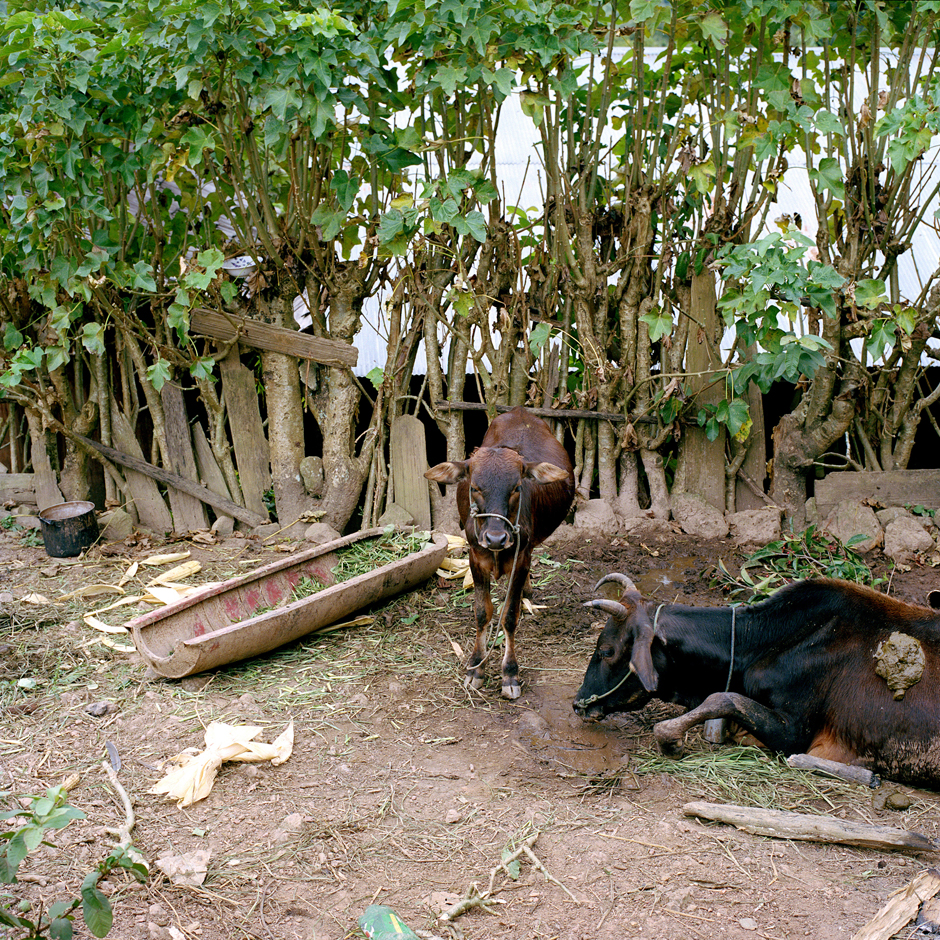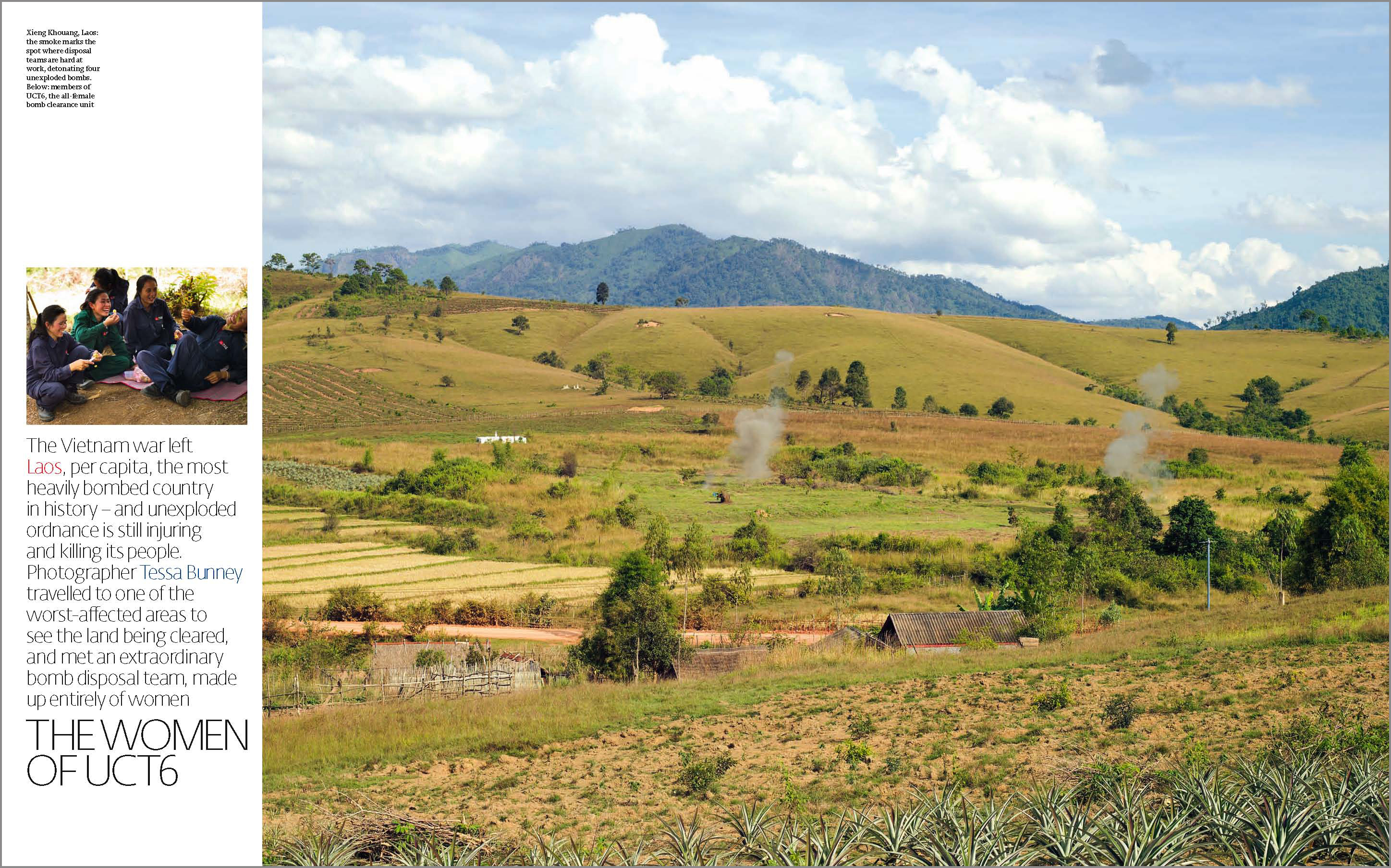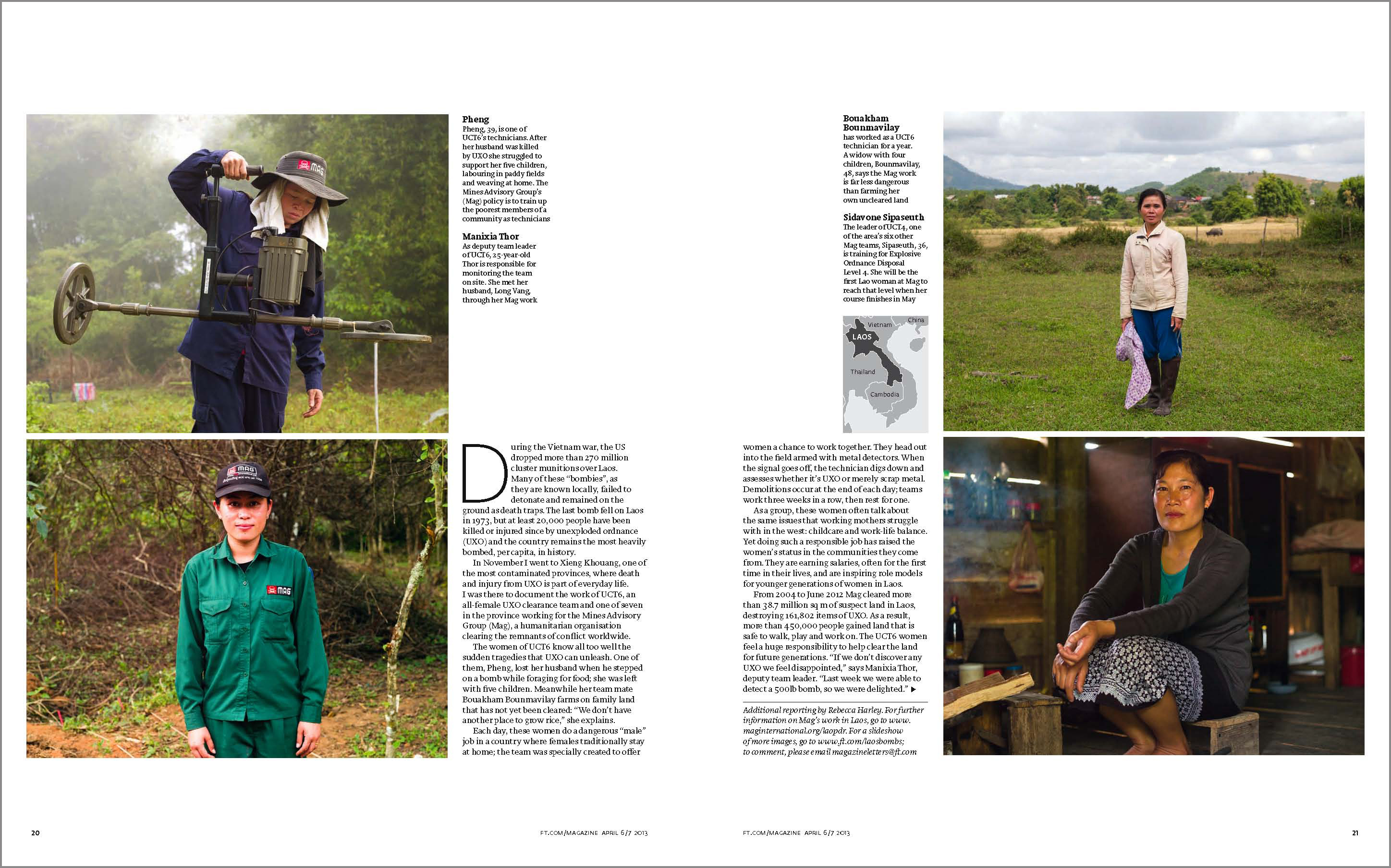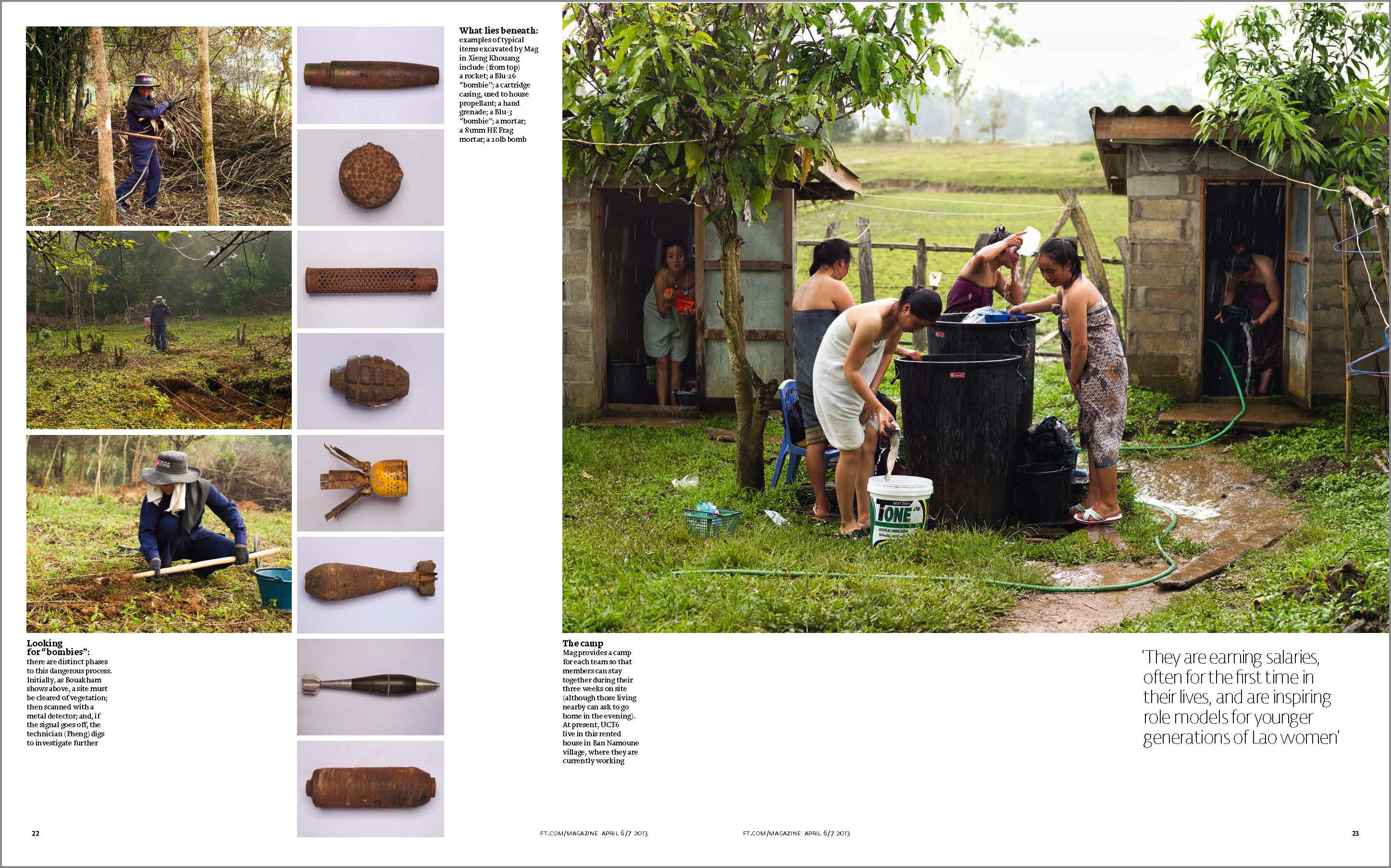The Women of UCT6
During the Vietnam War, the U.S. dropped more than two million tons of ordnance over Laos, including more than 270 million cluster bomb sub-munitions. An estimated 30 per cent of these ‘bombies’, as they are known locally, failed to detonate. More than 50,000 people have been killed and injured as a result of UXO incidents between 1964 and 2011. At least 20,000 of them since the war ended.
Four decades of peace have put Lao PDR firmly on the road to recovery, with many people now reaping benefits from a growing economy. However, this is only part of the picture, as some sectors of the country prosper, thousands of poor people in rural areas are still living with the threat of death or injury caused by accidents involving UXO. It remains a key cause of poverty and is one of the prime factors limiting the country’s long-term development, preventing people from using land and denying access to basic services.
In November 2012 I went to Xieng Khouang, one of the most contaminated provinces, where death and injury from UXO are part of everyday life. I was there to document the work of UCT6, an all-female UXO clearance team and one of seven in the province working for the Mines Advisory Group (MAG), a neutral and impartial humanitarian organisation clearing the remnants of conflict for the benefit of communities worldwide.
The women of UCT6 know all too well the sudden tragedies that UXO can unleash. One of them, Pheng lost her husband when he stepped on a bomb while foraging for food; she was left with five children. Meanwhile her teammate Bouakham Bounmavilay farms on family land that has not yet been cleared. “We don’t have another place to grow rice,” she explains.
Each day, these women do a dangerous ‘male’ job in a country where females traditionally stay at home; the team was specially created to offer women a chance to work together. They head out into the field armed with metal detectors. When the signal goes off, the technician digs down and assesses whether it’s UXO or merely scrap metal. Demolitions occur at the end of each day; teams work three weeks in a row, then rest for one.
As a group, these women often talk about the same issues that working mothers struggle with in the west: childcare and work-life balance. Yet doing such a responsible job has raised the women’s status in the communities they come from. They are earning salaries, often for the first time in their lives, and are inspiring role models for younger generations of women in Laos.
From 2004 to June 2012, MAG cleared more than 38.7 million square metres of suspect land in Lao PDR, destroying 161,802 items of UXO. As a result, more than 450,000 people gained land that is safe to walk, play and work on. The UCT6 women feel a huge responsibility to help clear the land for future generations. “If we don’t discover any UXO we feel disappointed,” says Manixia Thor, deputy team leader. “Last week we were able to detect a 5001b bomb, so we were delighted.”
You can view the multimedia from this project here
For more information about MAG’s work in Lao PDR please visit: http://www.maginternational.org/laopdr
The Women of UTC6 is supported by Arts Council England
